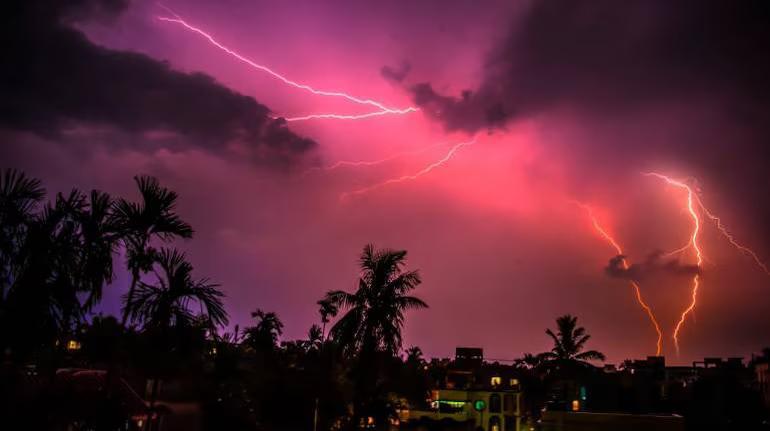
32 Cr Trees Die Every Year Due to Direct Lightning Strikes: Study
Lightning strikes are a natural phenomenon that can have devastating consequences. While we often associate lightning strikes with human fatalities and property damage, a recent study by researchers at the Technical University of Munich (TUM) has shed light on the significant impact of lightning strikes on the environment. According to the study, approximately 32 crore trees die every year due to direct lightning strikes. This staggering statistic highlights the importance of understanding the dynamics of lightning strikes and their effects on the ecosystem.
The study, published in Global Change Biology, integrated observational data with global lightning patterns to create a global vegetation model. This unique approach allowed the researchers to estimate the number of trees that are directly struck by lightning each year. The results are a sobering reminder of the power and unpredictability of lightning storms.
The researchers used a combination of satellite data and field observations to create a global map of lightning strikes. They then overlaid this data with information on global vegetation patterns, including tree density and species distribution. By combining these datasets, the team was able to estimate the number of trees that are directly struck by lightning each year.
The results are striking. According to the study, approximately 32 crore trees die every year due to direct lightning strikes. This number is likely an underestimate, as it does not account for trees that are lost to fires caused by lightning. In fact, many lightning strikes ignite fires that can spread rapidly, leading to widespread destruction and loss of life.
The impact of lightning strikes on the environment is far-reaching. In addition to the loss of trees, lightning strikes can also disrupt ecosystems and alter the composition of forests. This can have cascading effects on the entire ecosystem, including the loss of biodiversity and changes to the carbon cycle.
The study’s findings have significant implications for forest management and conservation efforts. As the climate continues to change, it is likely that lightning strikes will become more frequent and intense. This could lead to a significant increase in the number of trees that are lost to lightning strikes, with devastating consequences for ecosystems and biodiversity.
So, what can be done to mitigate the impact of lightning strikes on forests? One potential solution is to identify areas that are most vulnerable to lightning strikes and take steps to protect these areas. This could involve creating fire breaks, installing lightning detection systems, and conducting prescribed burns to reduce fuel loads.
Another approach is to promote the growth of fire-resistant tree species. By planting trees that are less susceptible to damage from lightning strikes, we can help to reduce the risk of forest fires and protect ecosystems from damage.
The study’s findings also highlight the need for more research on the dynamics of lightning strikes and their effects on the environment. By better understanding the patterns and mechanisms of lightning strikes, we can develop more effective strategies for mitigating their impact on ecosystems.
In conclusion, the study’s findings are a stark reminder of the importance of understanding the dynamics of lightning strikes and their effects on the environment. The loss of 32 crore trees every year due to direct lightning strikes is a significant environmental issue that requires urgent attention. By promoting the growth of fire-resistant tree species, identifying areas that are most vulnerable to lightning strikes, and conducting further research on the dynamics of lightning strikes, we can help to mitigate the impact of lightning strikes on forests and ecosystems.
Source:
https://onlinelibrary.wiley.com/doi/10.1111/gcb.70312






